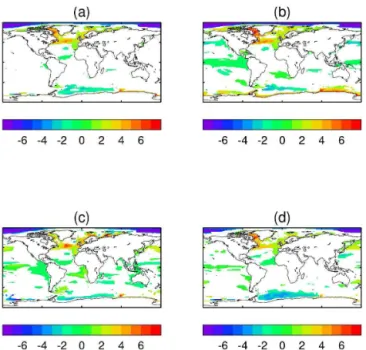The land-ice contribution to 21st-century dynamic sea level rise
Texto
Imagem




Documentos relacionados
Beyond warming air temperatures, other factors related to climate change may affect visita- tion patterns. Sea-level rise may alter opportunities for some types of recreation in
scape fire carbon emissions to investigate the response of future fires to projected changes in climate, population density, and harvest/land cover change during the 21st century..
This paper introduces a first time development of a two-way online coupled system from three models of atmosphere, ocean and sea ice (CCLM, TRIMNP and CICE, re- spectively) using
To assess the effect of direct signal transmission or horizon- tal coupling on the dynamic response of the GrIS over the next century, five model versions of a 3-D ice-dynamic
Relative sea level variations due the gravitational and Earth rotational e ff ects of recent (2000–2008) ice mass losses from di ff erent sources; (a) Greenland, (b) Antarctica,
In our analysis, we provide a regional spectrum of present and future exposures of land, populations and built capital for various sea-level rise projections, inter-annual
Here, we investigate the potential evolution of marine N 2 O emissions in the 21st century in response to anthropogenic climate change using the global ocean biogeochemical
Unstructured finite element mesh and model surface velocities after optimisation of the basal friction with the Robin inverse method, on the whole ice sheet and zooms on




